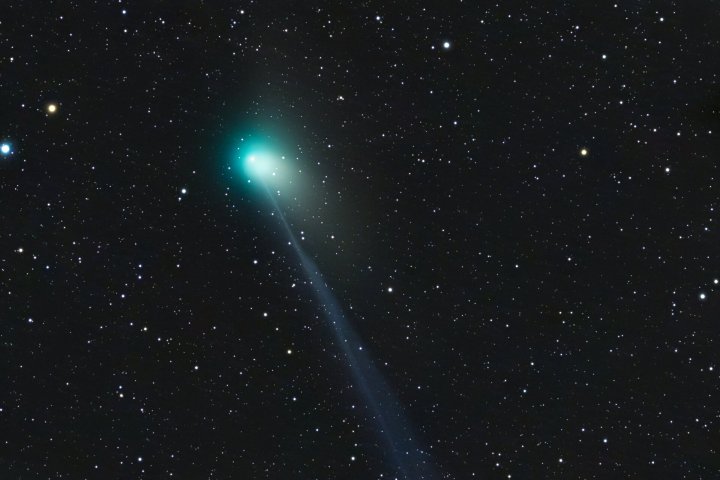This weekend will see a special visitor to the skies over our planet, as a 50,000-year-old comet will be passing by. Named C/2022 E3 ZTF, this comet appears greenish in the skies due to the chemicals it is composed of, and it will come close enough to the planet that it will be visible using binoculars or a telescope, and may even be visible to the naked eye.

Looking at the image above, you can see the comet has one bright ion tail pointing downward plus a second more diffuse dust tail to the left.
“The two tails point in slightly different directions because the forces act on dust and ions in different ways. While the larger dust particles are pushed by pressure from sunlight, the ions are much lighter and electrically charged so are easily carried by the solar wind and its magnetic field,” explains Jorge Amaya from the European Space Agency’s Space Weather Office in a statement. “Recently, a strange phenomenon has occurred with comet ZTF as it appears to have a third tail. This is, in fact, an optical illusion, due to our point of view of the dust trail.”
This week will be the last chance to observe the comet, so if the skies are clear where you are then you can head out and try to spot it. You’ll have the best chance of viewing the comet if you get far away from light sources like street lights, and you’ll need to give your eyes 15 to 20 minutes to adjust to the darkness — so avoid looking at light sources like your phone during this period.
According to the SETI Institute, your best bet for seeing the comet is to use a pair of binoculars and look toward the celestial north pole, near the bright star Polaris.
The best views of the comet will be through this weekend and up until mid-next week, and it will get dimmer and harder to spot from then. So if you have a moment this weekend you might be able to spot it, visible as a fuzzy greenish blob in the sky.
Editors' Recommendations
- The ‘Devil Comet’ will be visible during the solar eclipse in April
- NASA astronauts need good weather for Crew-8 launch. Here’s how it’s looking
- See how Blue Origin’s rocket did in first flight since 2022 explosion
- How to watch the Geminid Meteor Shower this week
- SpaceX needs good weather for Starship launch. Here’s how it’s looking




